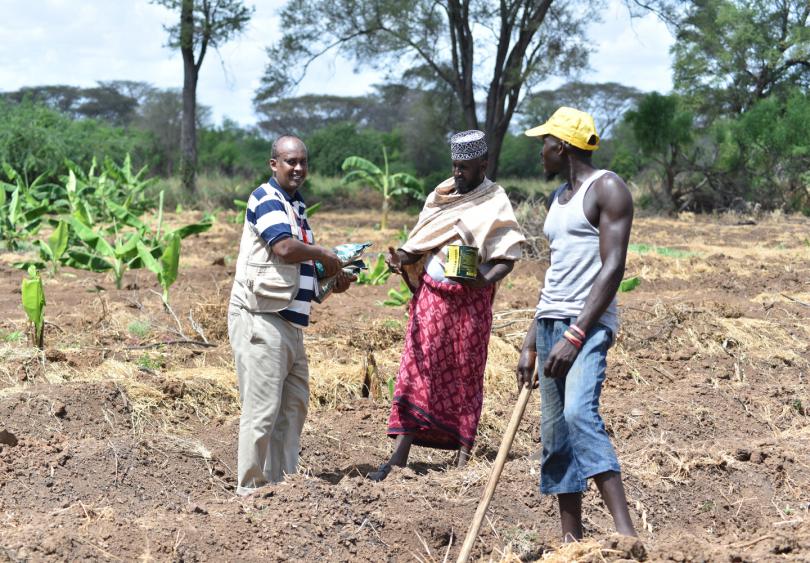FROM PASTORALIST TO A FARMER; THE STORY OF RESILIENCE IN A DROUGHT-STRICKEN COUNTY

Muhumed watering plants in his farm.
On a typical day, 40-year-old Muhumed Mohamed works on his farm from morning to midday. Muhumed, a resident of Fafe Constituency, Bura-East Sub-County, Garissa County, is a husband and father of five children aged 3-7 years.
We find him sprinkling some water in his nursery; something you wouldn’t expect in a County like Garissa, which has been severely affected by the ongoing drought crisis in Northern Kenya.
He tells us he has not always been a farmer. He was once a pastoralist, but when all his animals died because of the drought, he was forced to turn to farming to survive. He confesses to us that when he started, he knew nothing about it.
I had no experience in farming or setting up a nursery. I also did not know if a seed was good or bad, or how to use herbicides to control diseases, Muhumed tells us as he wipes the sweat off his brow.
Save the Children took me and several others through a training program on best farming practices and how to control crop diseases. We were then given three varieties of vegetable seeds (jute mallow, amaranths, watermelon) and 3 staple crops (beans, maize, sorghum), farm tools (hoes, spades, forks racks, machetes, watering cans), and hermetic storage bags for post-harvest handling practices, to help us start our farming, says Muhumed.

Muhumed and his colleague receiving seeds from Save the Children.
Now Muhumed is a happy and successful farmer. He tells us that he used the money he got from selling farm produce to buy a piece of land where he has constructed rentals for business owners. He also has a shop and can now afford to take his children to school and pay their fees.
The money I got from selling the farm produce is what officially started my life. I used it to buy land, goats and even cattle. I am also able to buy food and provide a balanced diet for my family. I am happy because my children are very healthy as a result, says Muhumed. “This field has uplifted my life and the lives of all my children.”

Muhumed sharing a watermelon he harvested from his farm with his children.
Through funding from the Bureau for Humanitarian Assistance (BHA) under USAID, Save the Children is implementing the Integrated Lifesaving Assistance to Crisis-Affected Populations in Wajir and Garissa Counties. The 12-month project seeks to implement an integrated Agriculture, Nutrition and water, hygiene and sanitation (WASH) emergency response program with the goal of providing immediate, lifesaving, and life-sustaining assistance to communities in the two counties, who have been affected by shocks and stresses due to recurring droughts and locust invasions.
DISCALIMER: This article is made possible by the generous support of the American people through the United States Agency for International Development (USAID). The contents are the responsibility of Save the Children and do not necessarily reflect the views of USAID or the United States Government